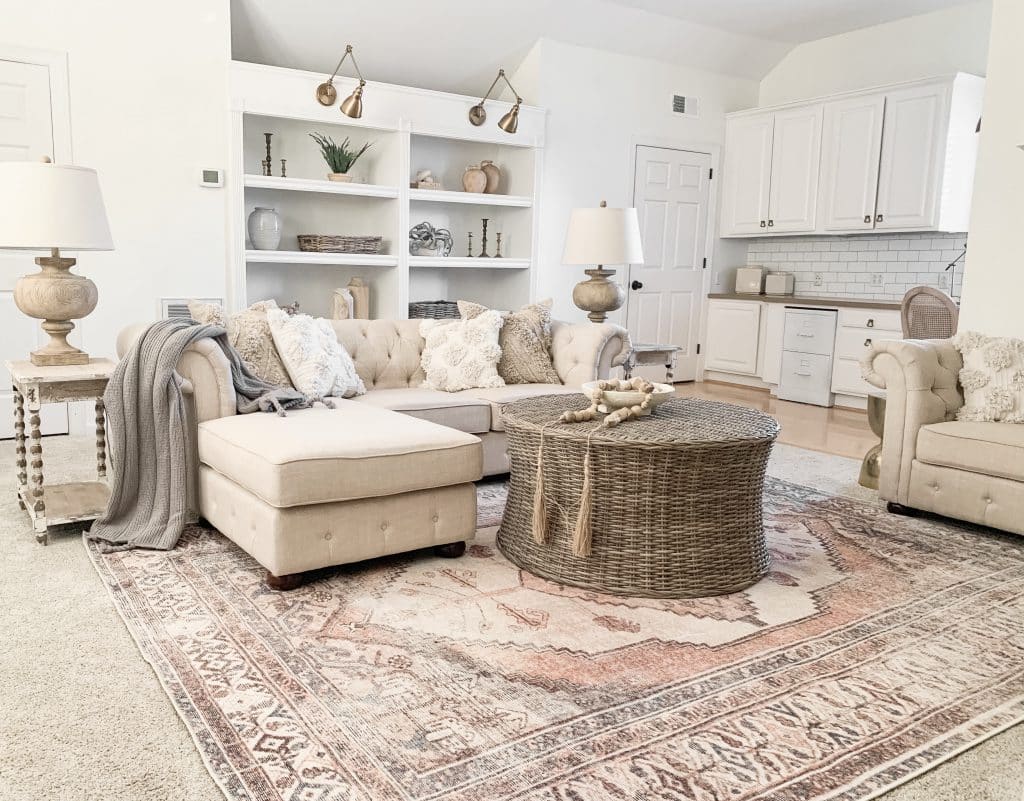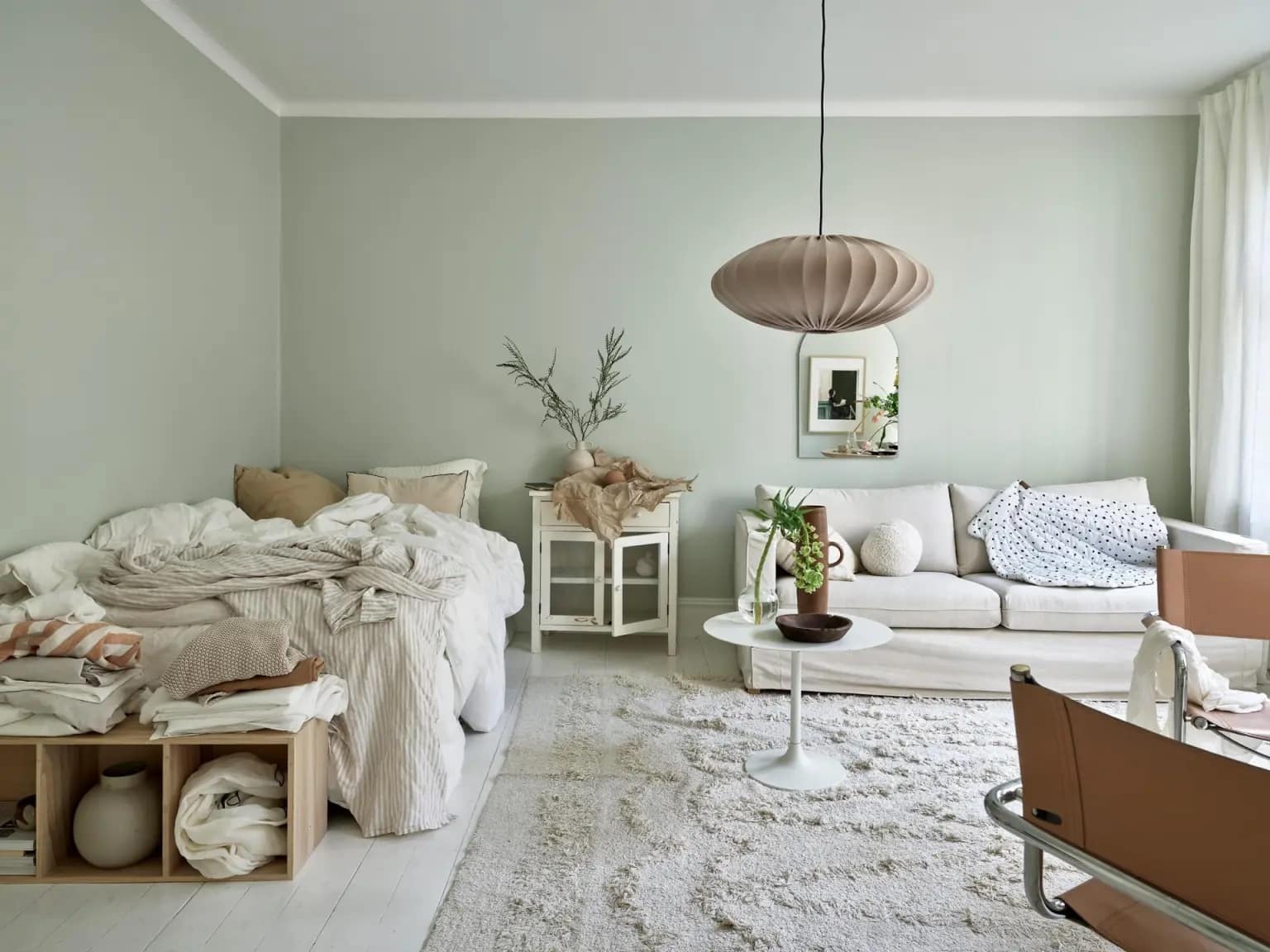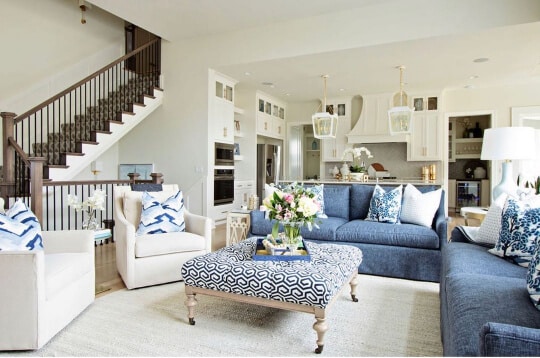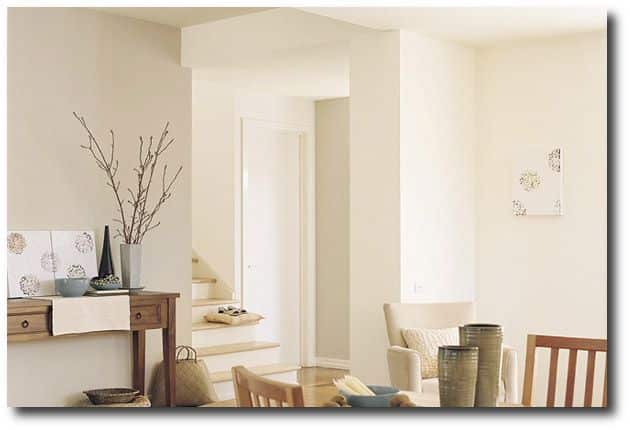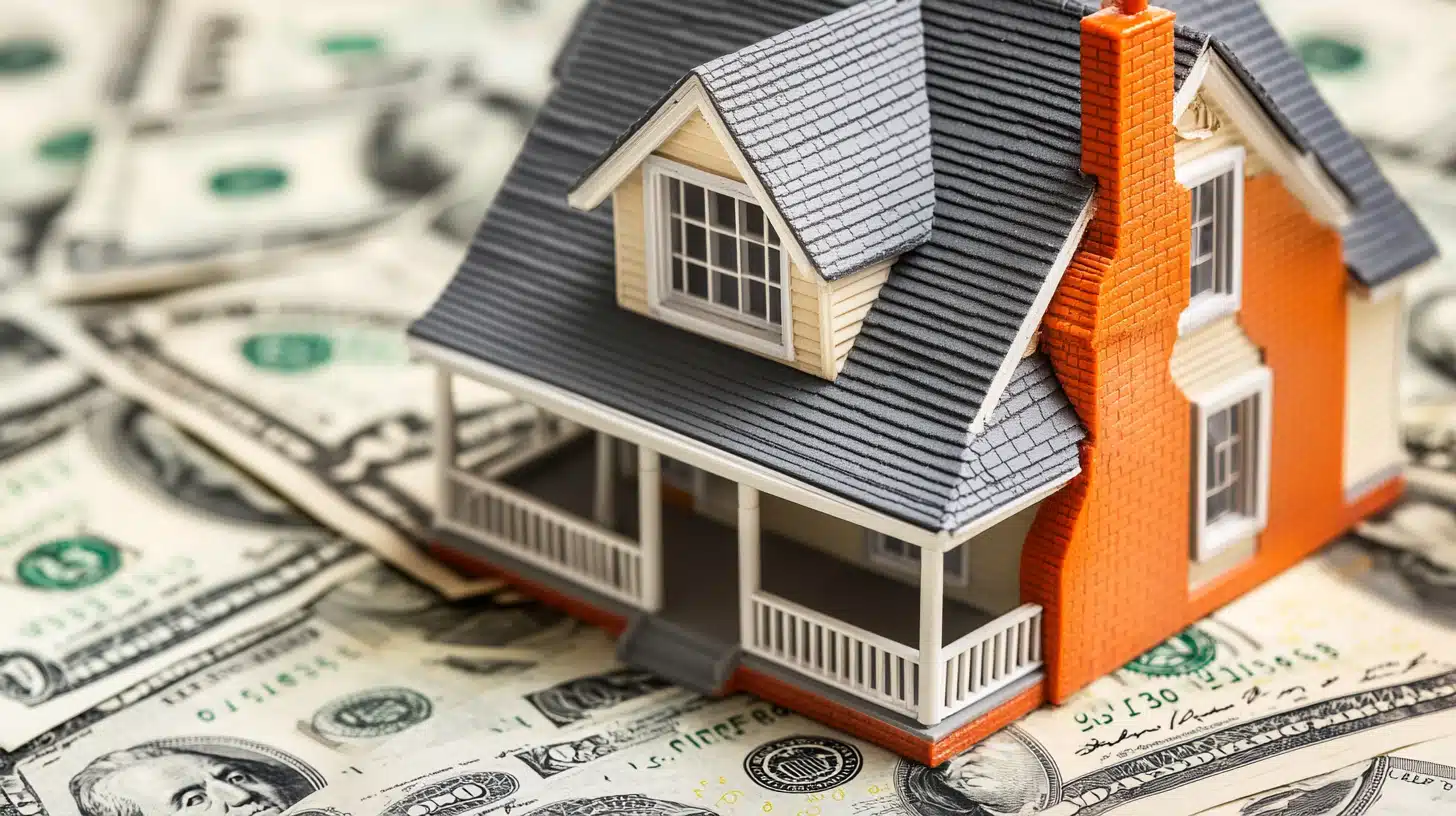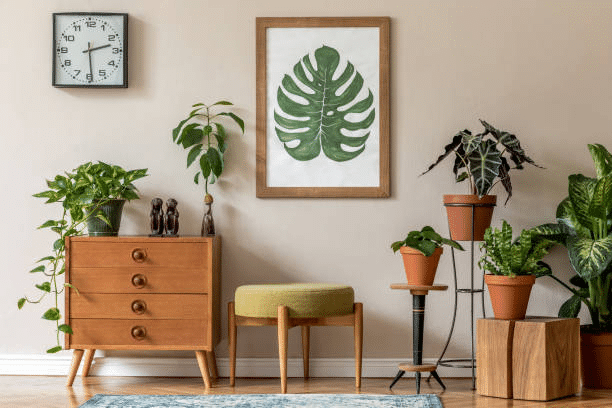11 Best Ways to Decorate a Large Wall and Transform Your Space
Do you have a big, empty wall staring at you? I know how tricky it can be to fill that space without making it look cluttered. Large walls can be a real challenge, but they’re also a great chance to show off your style.
I’ve got good news: there are lots of ways to make that big wall look great. In this post, I’ll show you 11 easy and fun ways to decorate large walls.
You’ll learn how to turn that blank space into a stunning focal point that fits your home perfectly.
Let’s dive in and explore these wall-decorating ideas that will improve your room!
How to Decorate a Large Wall
1. Gallery Wall
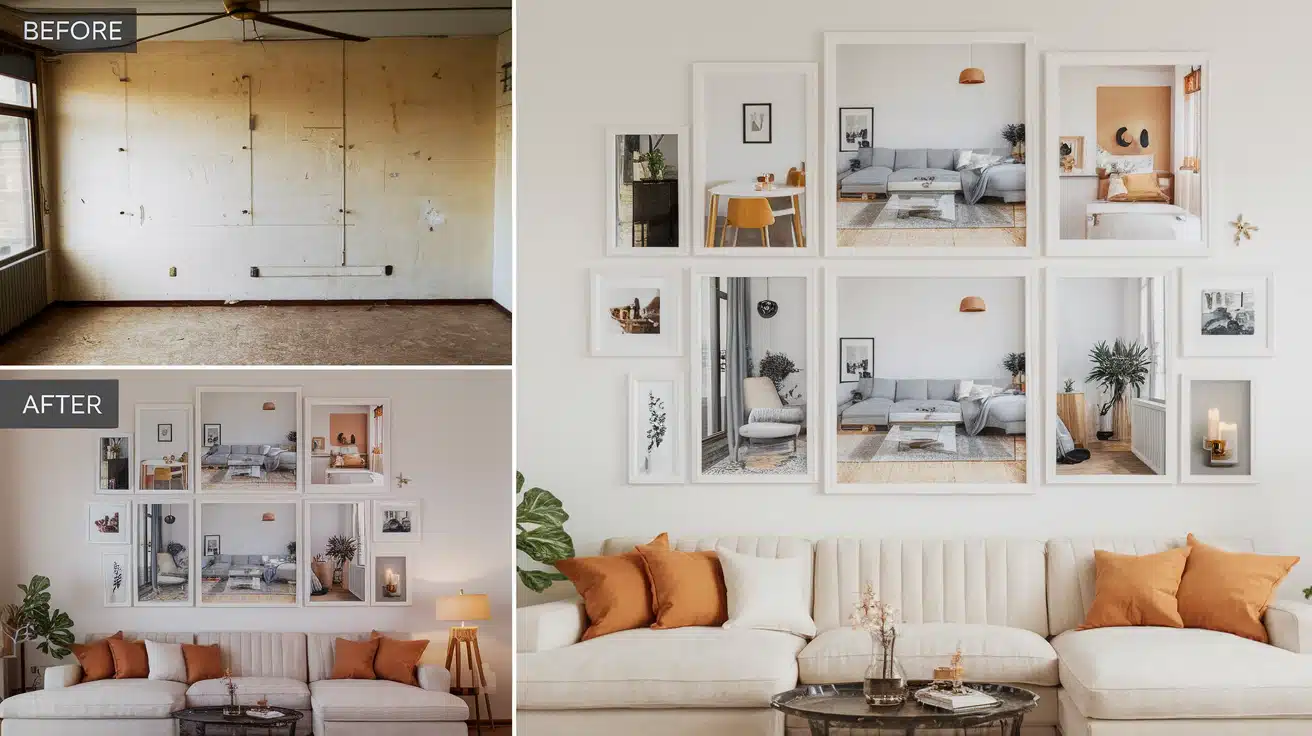
Gallery walls are a great way to fill up a big space. I’ve found they add a personal touch to any room.
Here’s how you can create one:
- Mix and match: Use different frame sizes and styles. This adds visual interest. You can include photos, art prints, and even small objects.
- Plan your layout: Before hanging anything, lay out your pieces on the floor. Play around with the arrangement until you like it. Take a photo of the final layout to use as a guide.
- Choose a theme: This could be color-based, like black and white photos, or content-based, like travel memories. A theme helps tie everything together.
- Consider spacing: Keep about 2-3 inches between frames. This gives each piece breathing room but still looks cohesive.
- Start in the middle: When hanging, begin with the centerpiece and work your way out. This helps keep the arrangement balanced.
- Add as you go: You don’t have to fill the whole wall at once. Start with a few key pieces and add more over time. This way, your gallery wall can grow with you.
Remember, there’s no right or wrong way to do a gallery wall. The goal is to create something that makes you happy when you look at it.
2. Large-Scale Art
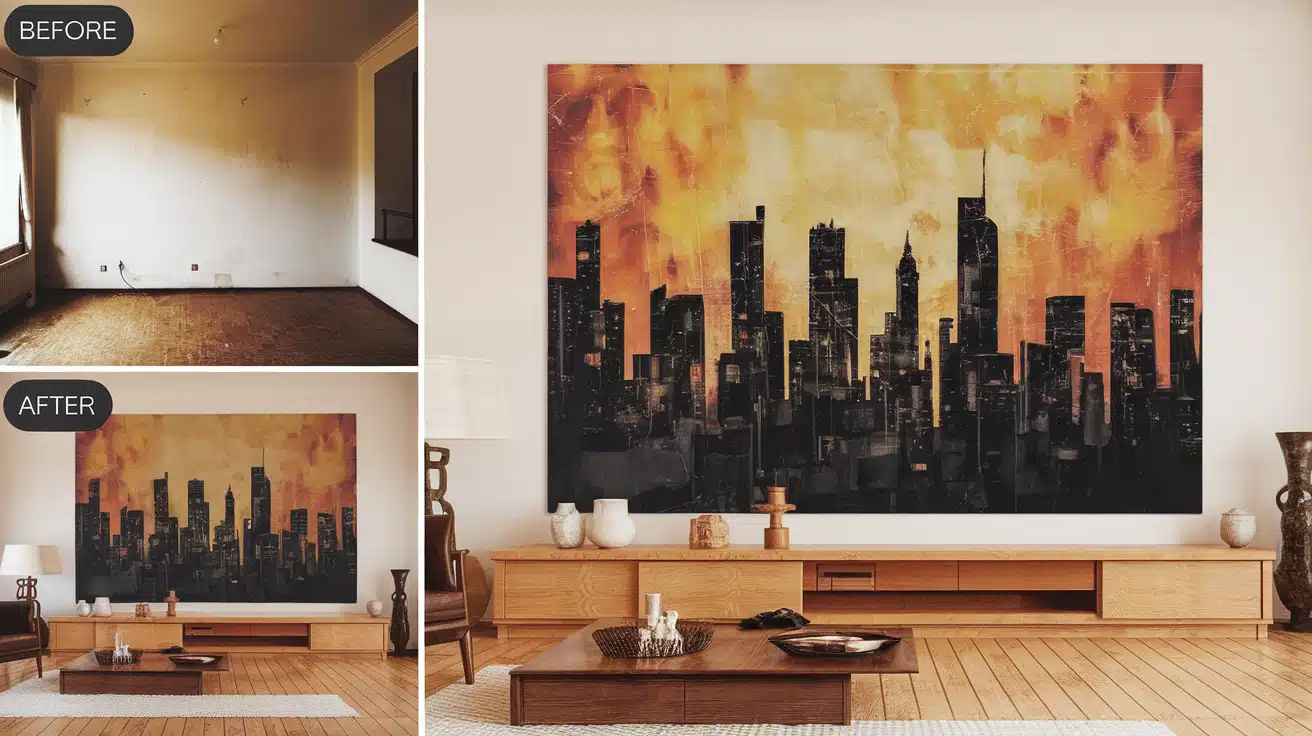
Large-scale art is a simple yet powerful way to decorate a big wall. I’ve seen it transform rooms instantly.
Here’s how you can use it:
- Choose your piece: Pick something that fills at least two-thirds of the wall space. It could be a painting, a photograph, or even a tapestry.
- Consider the room: Make sure the art fits your room’s style. A modern abstract might look out of place in a rustic setting.
- Color matters: Use the colors in the art to connect with other items in your room. This creates a cohesive look.
- Placement is key: Hang your art at eye level. In most living spaces, this means the center of the piece should be about 57-60 inches from the floor.
- Lighting: Good lighting can make your art pop. Consider adding a picture light or adjusting nearby lamps to highlight the piece.
- Frame it right: The frame can change the whole look. A thin frame can make the art feel bigger, while a chunky frame adds weight.
- DIY option: If you’re feeling creative, try making your own large-scale art. Large canvases and acrylic paints are fairly cheap for the impact they give.
What’s important is that it fills the space well and makes you happy when you look at it. It’s a great way to show off your style in a big way!
3. Wall Mural
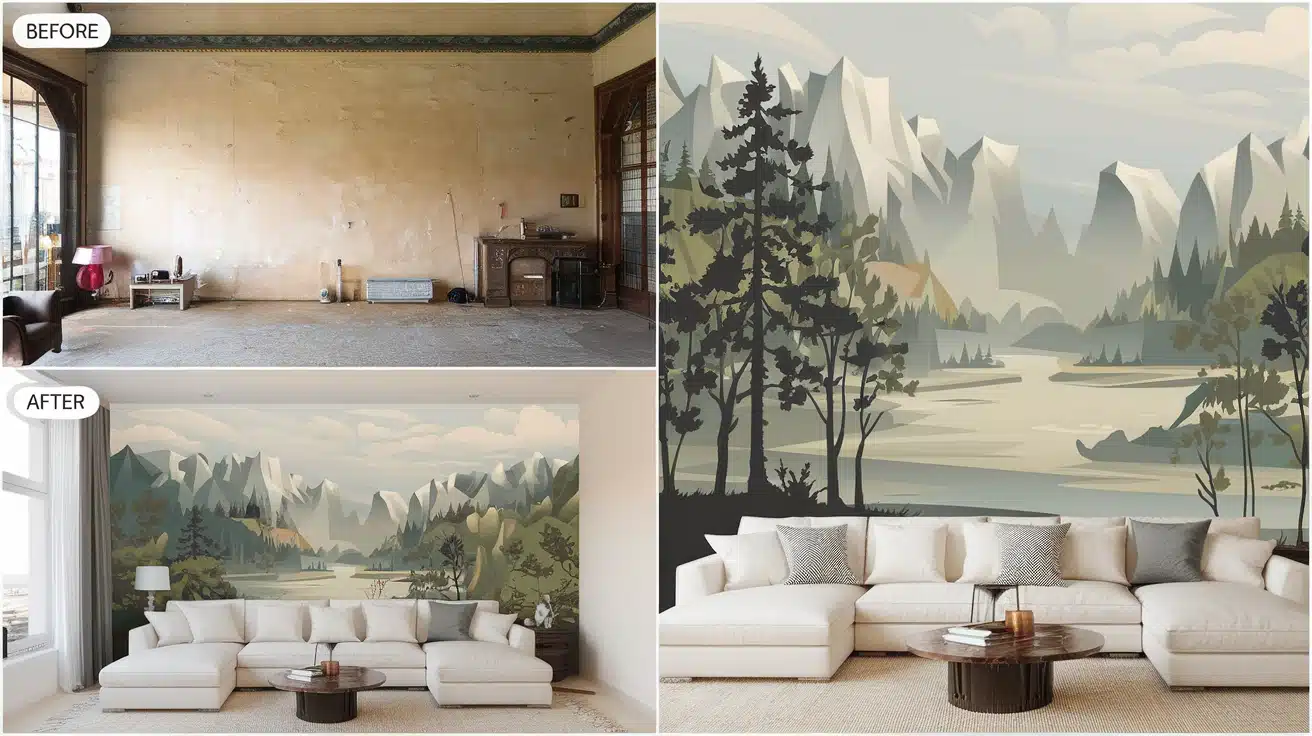
Wall murals can completely change how a room feels. I’ve seen them turn plain walls into stunning focal points.
Here’s what you need to know about using wall murals:
- Choose your design: Pick a mural that fits your room’s style. Options range from nature scenes to abstract patterns or even cityscapes.
- Size matters: Measure your wall carefully. Most murals come in panels, so you’ll need to know exactly how much space you’re covering.
- Prep the wall: Clean the wall and make sure it’s smooth. Any bumps or texture will show through the mural.
- Application methods: You can choose between paste-the-wall and pre-pasted murals. Paste-the-wall is often easier for beginners.
- Get help: Hanging a mural is easier with an extra pair of hands. Ask a friend to help, especially for large walls.
- Align carefully: Take your time lining up the panels. Misalignment will be very noticeable, especially with patterns.
- Consider removable options: If you’re renting or would like to change your decor often, look for removable murals. They peel off without damaging the wall.
- DIY possibility: If you’re artistic, you could paint your own mural. This allows for complete customization but requires more time and skill.
Choose something you’ll love looking at every day!
4. Floating Shelves
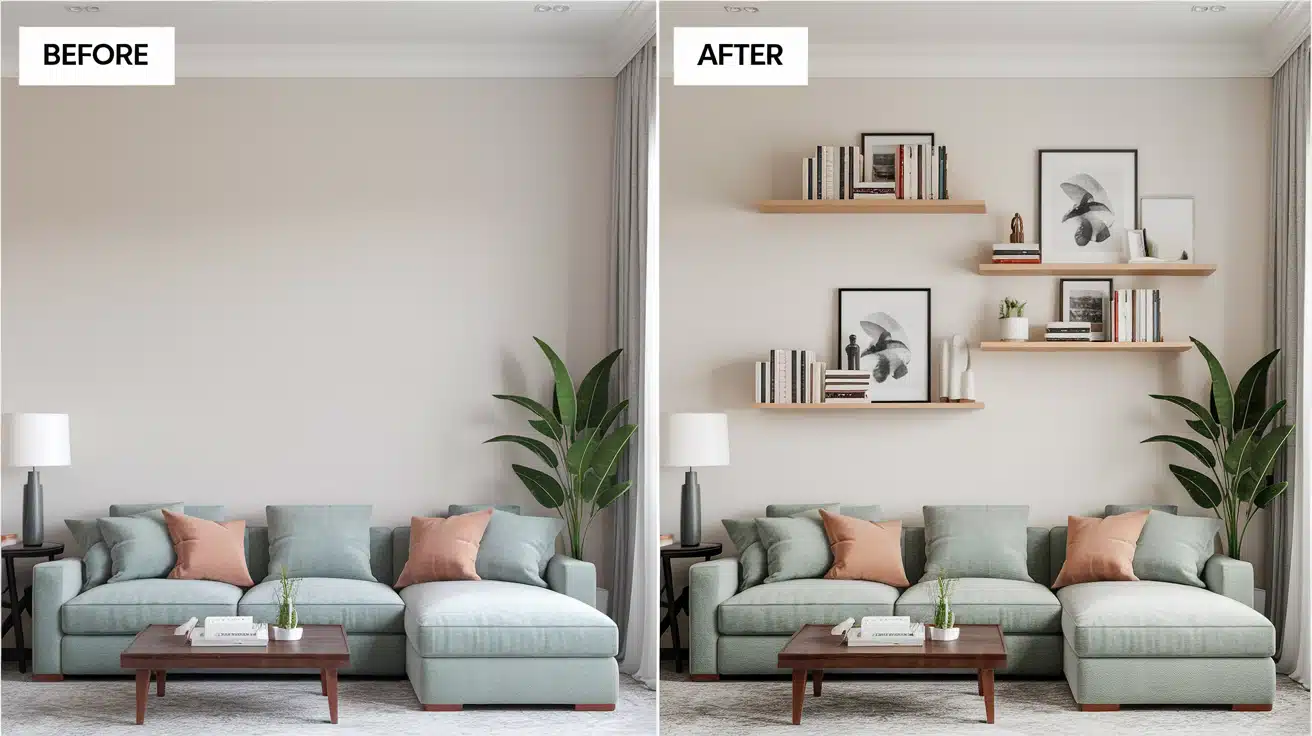
Floating shelves are a practical and stylish way to decorate a large wall. I’ve found they add both function and flair.
Here’s how to use them:
- Choose your style: Pick shelves that match your room’s decor. Wood, metal, or glass can each create a different look.
- Plan the layout: Arrange shelves in interesting patterns. Staggered or asymmetrical layouts can add visual interest.
- Mix sizes: Use a combination of long and short shelves to create variety.
- Style your shelves: Display a mix of items. Books, plants, and decorative objects can all work well together.
- Consider weight limits: Make sure your shelves can handle the weight of what you’re putting on them.
- Use them as a gallery: Lean framed art or photos on your shelves for an easy-to-change display.
- Add lighting: Under-shelf lighting can create a warm glow and highlight your displayed items.
5. Tapestry or Wall Hanging
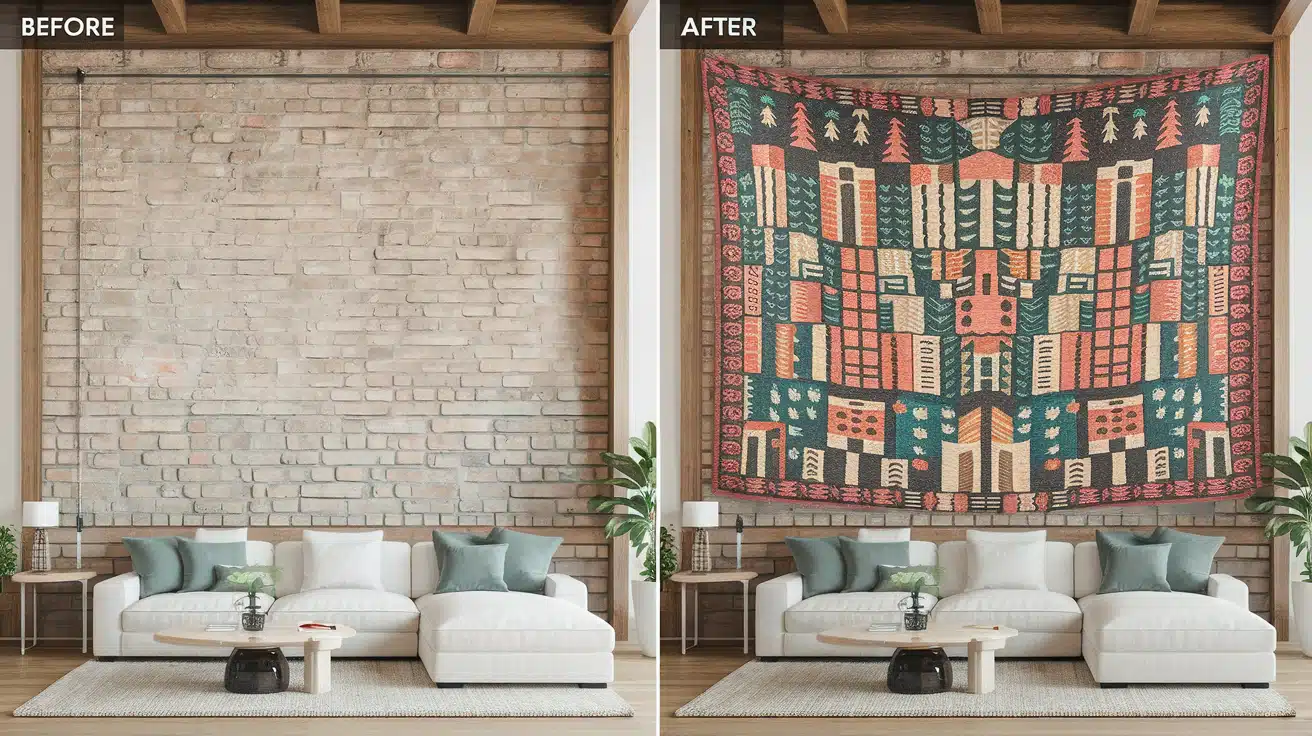
Tapestries or wall hangings can add color and texture to a large wall. I’ve seen them create a cozy feel in many rooms.
Here’s how to use them:
- Pick your style: Choose from traditional woven tapestries, modern fabric prints, or even macrame hangings.
- Size matters: Go big for impact. A large tapestry can cover most of a wall.
- Hanging methods: Use a rod for a neat look, or try clips for a more casual vibe.
- Layer it: Hang a tapestry over painted wood or shiplap for extra texture.
- Care for it: Check care instructions. Some tapestries can be washed; others need dry cleaning.
- DIY option: If you’re crafty, try making your own wall hanging with fabric and a dowel rod.
- Think seasonal: Tapestries are easy to switch out, making them great for changing with the seasons.
6. Mirrors
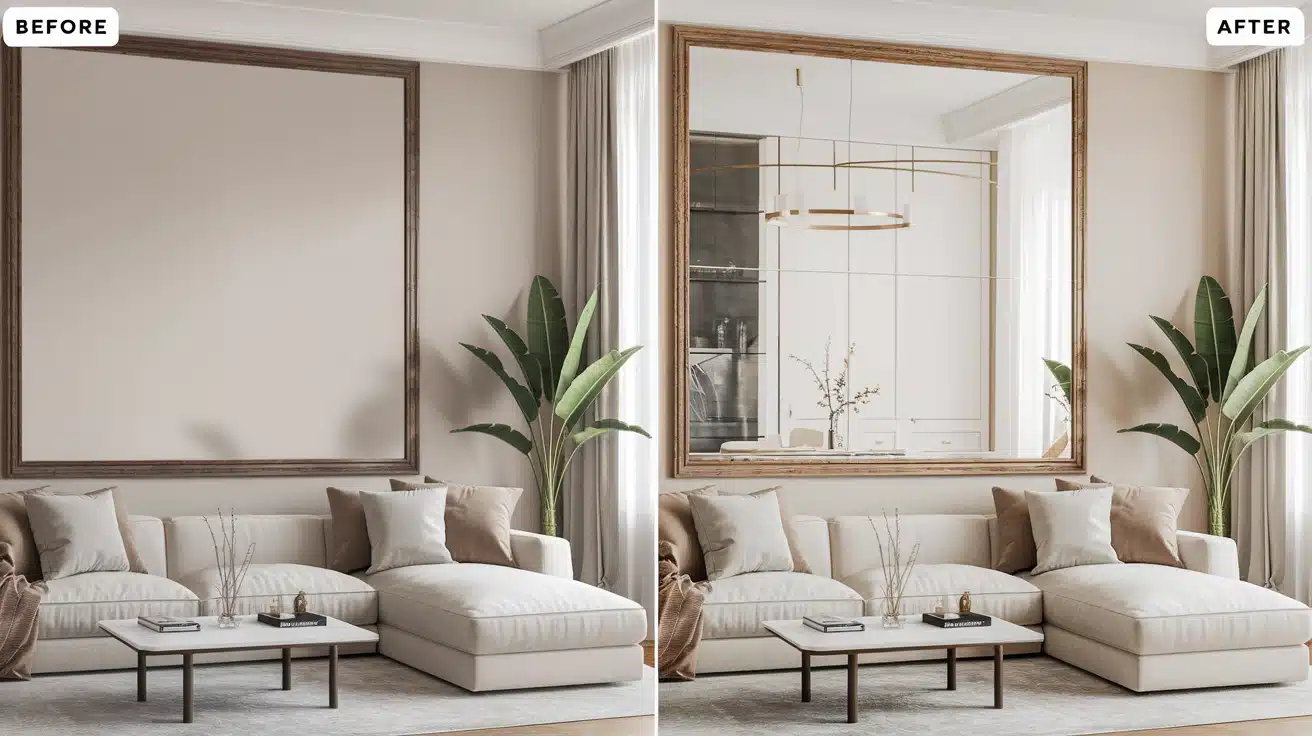
Mirrors can make a big impact on a large wall. I’ve used them to brighten and enlarge spaces.
Here’s how to decorate with mirrors:
- Go oversized: A large mirror can be a statement piece on its own.
- Create a collection: Group several smaller mirrors for an artistic display.
- Think shape: Try unusual shapes like sunbursts or asymmetrical designs.
- Frame it: The frame can be as decorative as the mirror itself.
- Placement is key: Position mirrors to reflect light or a nice view.
- Functional art: Consider a full-length mirror for both practicality and style.
- DIY option: Create a custom mirror by adding a frame to a plain mirror.
Remember, mirrors can double the visual impact of your other decor by reflecting it. They’re a clever way to make your space feel larger and brighter.
7. Statement Clock
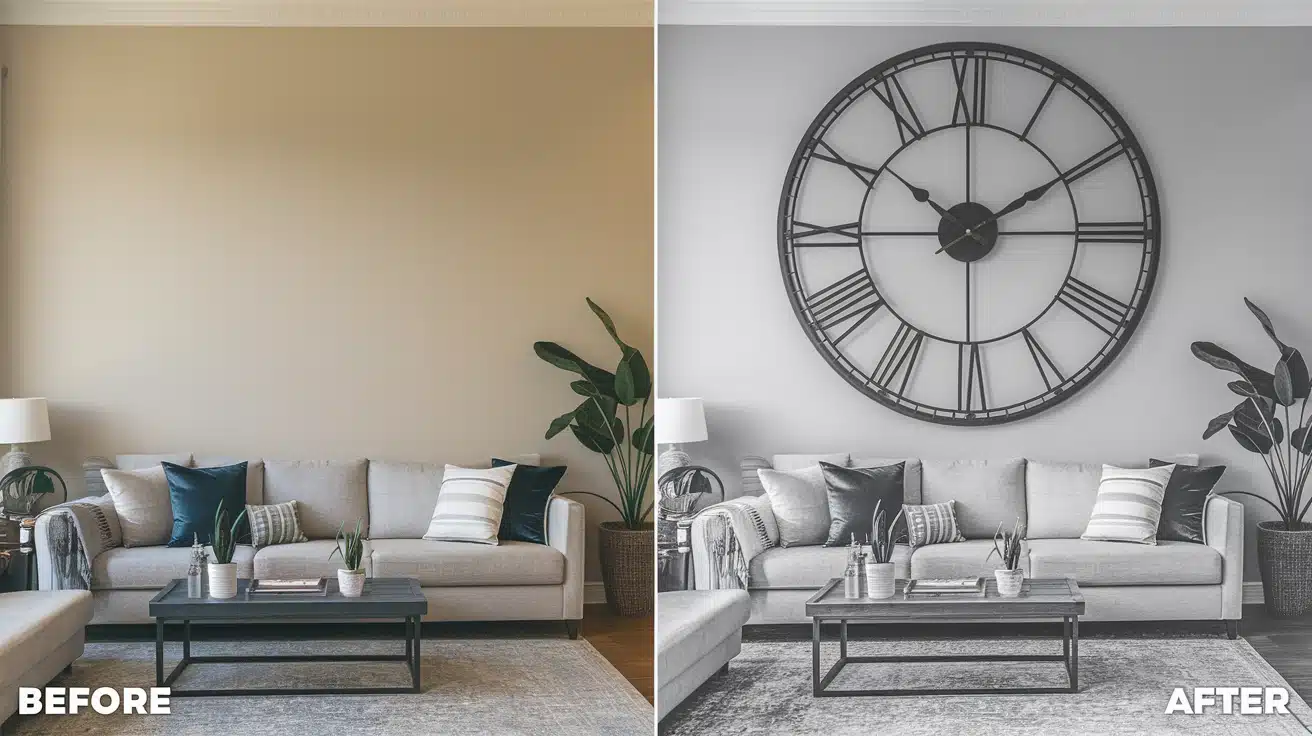
A big, eye-catching clock can be a great focal point. I’ve found they add both style and function to a room.
Here’s how to use a statement clock:
- Size up: Choose a clock that’s proportional to your wall. Bigger is often better.
- Style matters: Pick a clock that fits your decor, from sleek modern to rustic charm.
- Go beyond circles: Try unusual shapes like starburst designs or even square clocks.
- Color pop: Use a brightly colored clock to add a splash of color to a neutral wall.
- DIY potential: Create your own oversized clock with clock hands and creative number markers.
- Think 3D: Some statement clocks have dimensional elements that add extra visual interest.
- Placement: Hang it where it’s easily visible but also where it makes sense in the room’s layout.
A statement clock is more than just a timepiece. It’s a functional piece of art that can tie a room together.
8. Wall-Mounted Plants
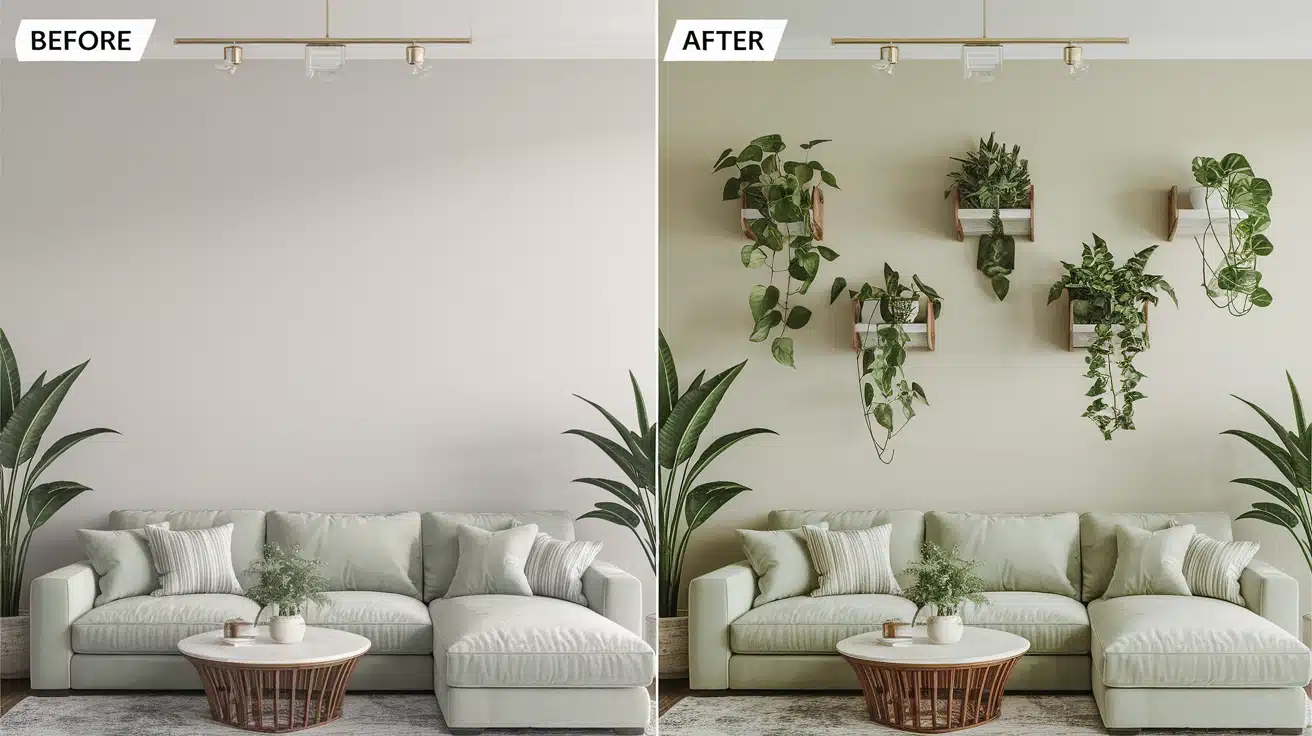
Bringing nature indoors with wall-mounted plants can liven up any space. I’ve seen it create a fresh, vibrant atmosphere.
Here’s how to use wall-mounted plants:
- Choose your plants: Pick plants that do well vertically, like ferns, air plants, or trailing vines.
- Use various planters: Mix different styles and sizes of wall planters for visual interest.
- Create a pattern: Arrange your planters in a geometric shape or flowing design.
- Consider care: Make sure you can easily water and maintain your wall-mounted plants.
- Mix with art: Combine your plants with framed art for a dynamic display.
- Go faux: If you don’t have a green thumb, high-quality artificial plants can work, too.
- Add lighting: Spotlights can highlight your plants and create interesting shadows.
Wall-mounted plants not only look great, but they can also improve air quality and bring a sense of calm to your space.
9. Architectural Elements
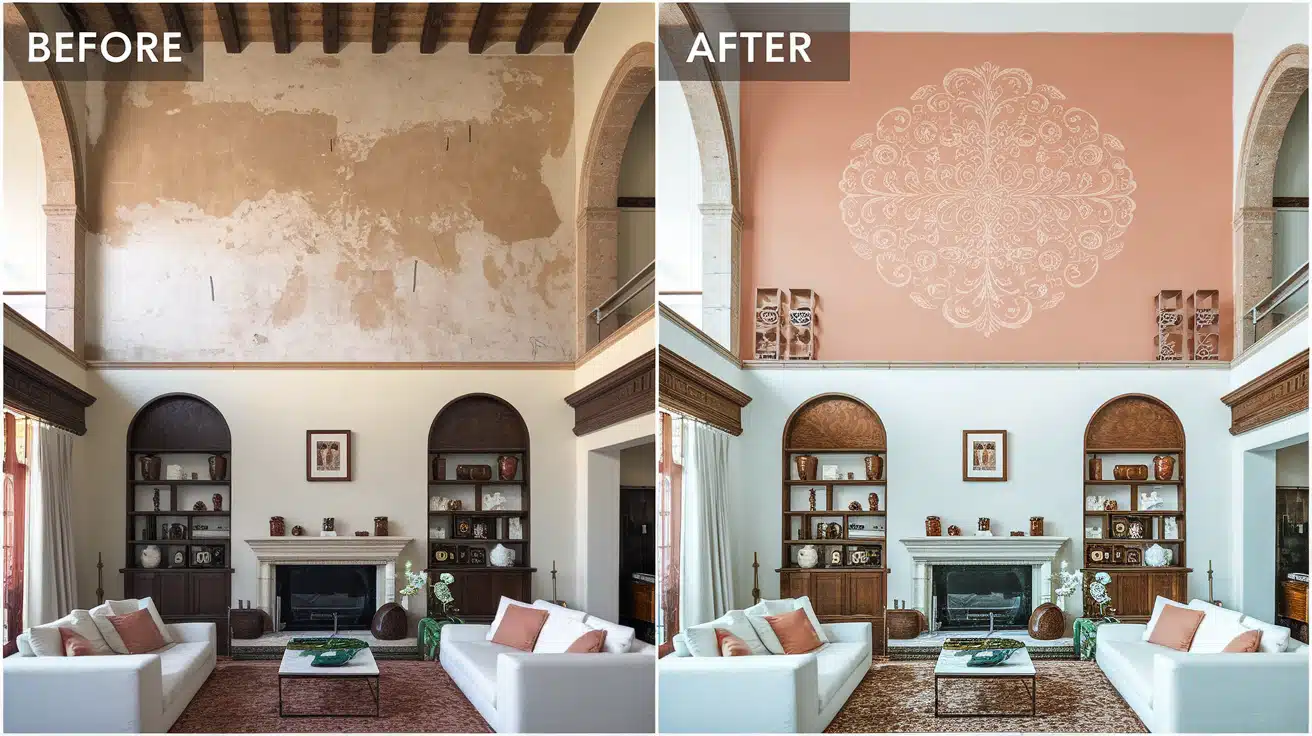
Adding architectural elements can give character to a plain wall. I’ve used them to create instant charm.
Here’s how to incorporate architectural elements:
- Salvage yards: Look for old windows, shutters, or door frames to hang on your wall.
- Faux beams: Add warmth and rustic charm with faux wooden beams.
- Molding: Create patterns on your wall using decorative molding.
- Tin tiles: Vintage-style tin tiles can add texture and a metallic gleam.
- Faux brick or stone: Use panels to create an exposed brick or stone look.
- Shiplap: Add a coastal or farmhouse vibe with real or faux shiplap.
- Mix materials: Combine wood, metal, and other materials for a unique look.
Architectural elements can add depth and interest to a wall, making it look like the features have always been part of the home.
10. Wallpaper
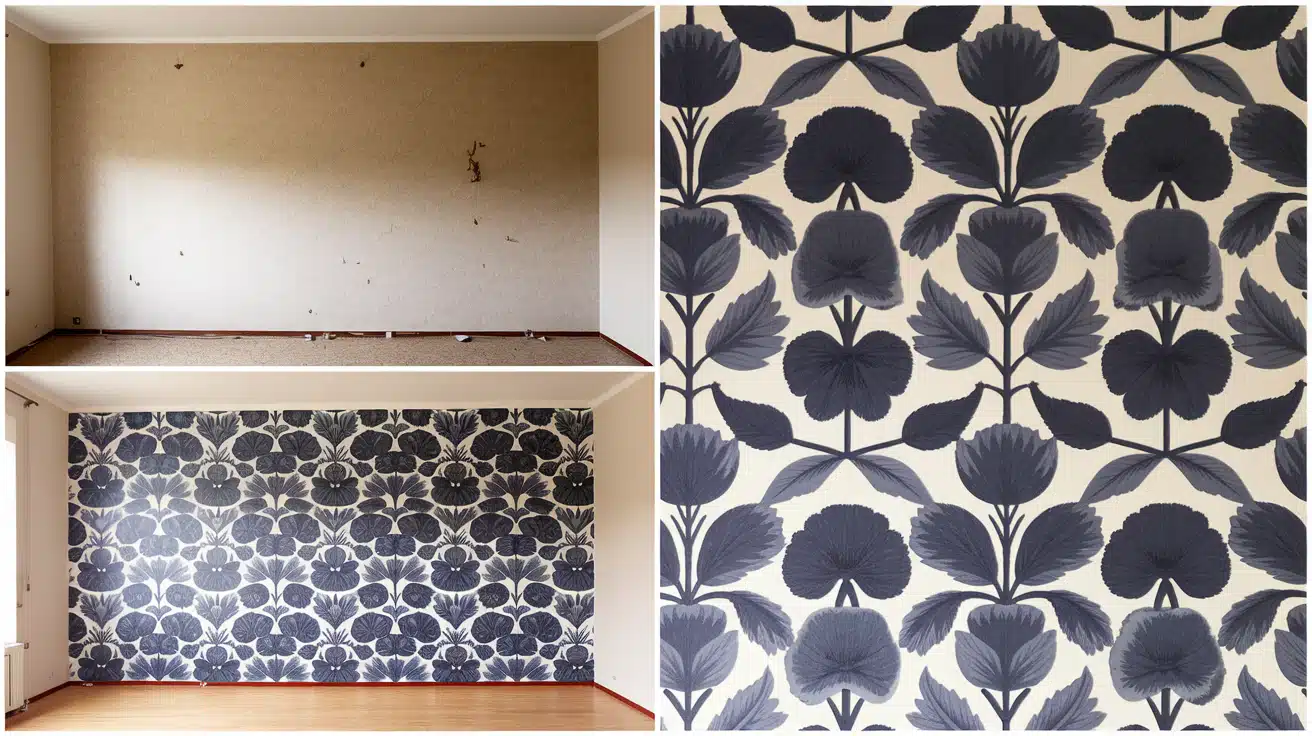
Wallpaper can transform a large wall with minimal effort. I’ve seen it create stunning effects in many homes.
Here’s how to use wallpaper effectively:
- Bold patterns: Large walls can handle big, bold patterns without overwhelming the space.
- Accent wall: Use wallpaper on one wall to create a focal point.
- Texture: Consider textured wallpapers for added depth.
- Removable options: Try peel-and-stick wallpaper for an easy, rental-friendly option.
- Murals: Wallpaper murals can create a dramatic, immersive effect.
- Mix and match: Use complementary wallpapers to create stripes or panels.
- Frame it: Use molding to frame a section of wallpaper-like artwork.
No doubt, they can add color, pattern, and personality to your space in a way that paint alone can’t match.
11. Textured Wall Panels
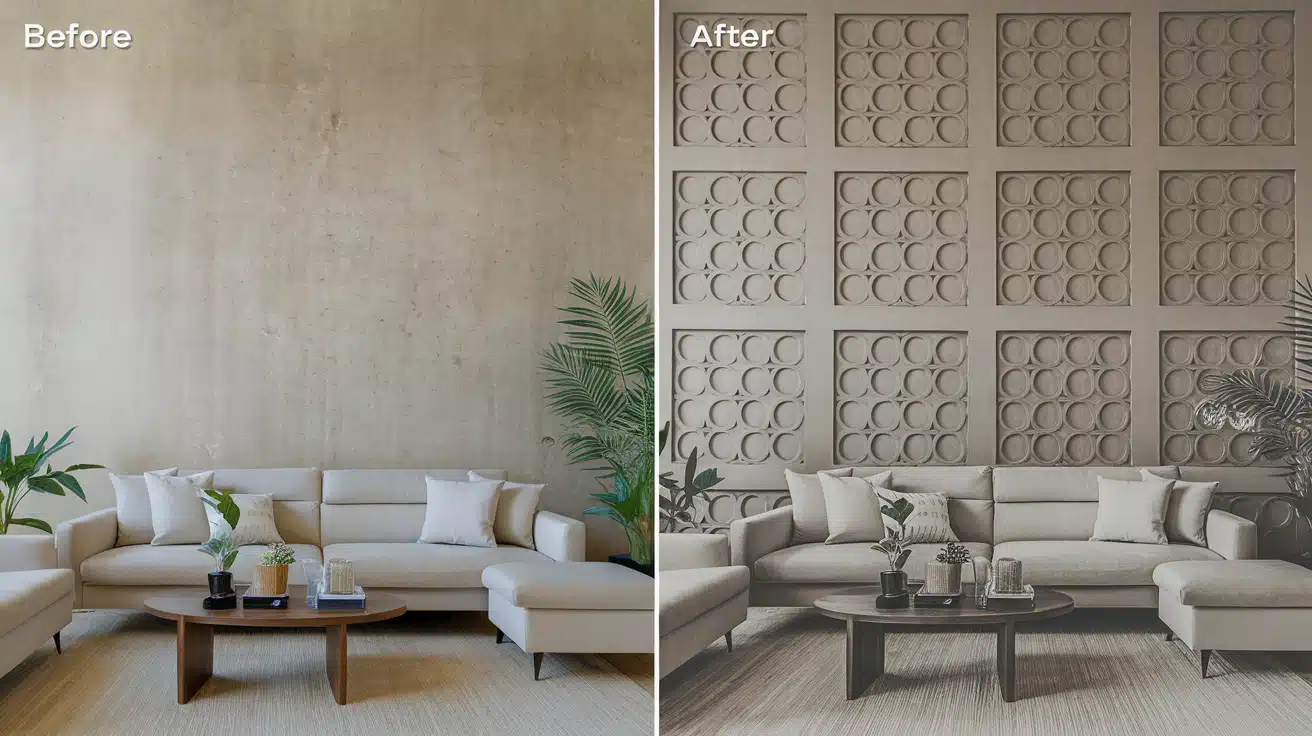
Textured wall panels can add depth and interest to a large wall. I’ve found they create a sophisticated, custom look.
Here’s how to use them:
- Material choices: Panels come in wood, fabric, leather, or 3D-printed plastic.
- Pattern play: Choose from geometric patterns, wave designs, or nature-inspired textures.
- Paint options: Many panels can be painted to match or contrast your decor.
- Installation: Some panels are DIY-friendly, while others might need professional installation.
- Lighting: Use uplighting or downlighting to enhance the texture and create shadows.
- Partial coverage: You don’t have to cover the whole wall; try a section for a focal point.
- Sound absorption: Some textured panels can help improve room acoustics.
Textured wall panels can turn a flat, boring wall into art. They add a tactile element that makes your space more interesting and inviting.
Approximate Investement In Decoration
| Wall Decor Idea | Quantity | Estimated Cost per Item | Total Cost |
|---|---|---|---|
| Gallery Wall | 8-12 frames | $10 – $30 | $80 – $360 |
| Large-Scale Art | 1-3 canvases | $40 – $150 | $40 – $450 |
| Wall Mural | Paint & supplies or pro artist fee | $138 – $1,520 | $138 – $1,520 |
| Floating Shelves | 3-6 shelves | $20 – $50 | $60 – $300 |
| Tapestry or Wall Hanging | 1-2 tapestries | $25 – $100 | $25 – $200 |
| Mirrors | 1 large or 2-3 smaller mirrors | $50 – $200 | $50 – $600 |
| Statement Clock | 1 clock | $40 – $150 | $40 – $150 |
| Wall-Mounted Plants | 3-5 planters | $15 – $50 | $45 – $250 |
| Architectural Elements | Crown molding, corbels, etc. | $50 – $150 | $50 – $300 |
| Wallpaper | 1-2 rolls | $30 – $100 per roll | $60 – $200 |
| Textured Wall Panels | 4-8 panels | $20 – $80 | $80 – $640 |
Total Estimated Budget Range: $668 – $5,010+
Depending on your choices, you can mix and match these decor ideas within the budget that suits your needs.
The largest cost variances are in the Wall Mural and Large-Scale Art options, especially if professional assistance is required.
These choices allow you to customize your wall based on your desired style, design complexity, and budget.
Conclusion
Fun Fact: Did you know that ancient Egyptians were the first to hang decorative tapestries on walls? They sure knew how to make a statement! Now it’s your turn to make history in your own space.
Remember, your wall is like a blank playlist waiting for your greatest hits. Whether you’re into the classic track of floating shelves or the remixed version of a DIY mural, there’s a perfect decorating tune for you.
So, grab your imagination paintbrush and start composing your wall’s masterpiece. Who knows? You might just create the next big trend in home decor.
Ready to dive deeper into the world of wall wonders? Let’s turn that wall from empty to marvelous!


